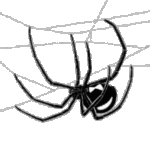With the warmer temperatures comes the increased frequency of insect bites. While some insect bites-such as mosquito bites-are more of a nuisance than a threat and are easily prevented with commercial products and homemade repellents, spider bites are a different story. Many people are quite concerned about the effects of spider bites, even though there are only a few spiders in the United States-the Black Widow and the Brown Recluse-with enough venom to harm people.
Nevertheless, it is good for people to be proficient in identifying spider bites and treating them.
Identifying Spider Bites
Identifying spider bites can be difficult because people often do not see the spider that bites them, nor are they able to bring the spider to the doctor to get a positive confirmation. There are common symptoms of spider bites, including redness, swelling, itching, and pain-but those are common symptoms that can often describe a number of different insect bites.
For many people, the tell-tale sign of a spider bite is a small blister at the center with a reddish circle surrounding the center. There also is frequently a pale circle and swelling.
The website BadSpiderBites.com features a photo gallery with pictures of various spider bites, which makes it a resource for those wanting further assistance in identifying spider bites.
Identifying poisonous bites can only effectively be done by doctors and it is best to consult them if you have specific concerns about your bite. Moreover, these bites are often identified by their long term symptoms (see below).
Treating Spider Bites
Treating spider bites is fairly easy and as long as it is not a toxic bite, it can be done using simple at home products. There is no need to purchase commercially available venom extractors.
The Mayo Clinic’s MayoClinic.com recommends that spider bites be cleaned with soap and water. A cool compress can be used over the spider bite to reduce swelling and aspirin can be taken to reduce swelling. Symptoms should be monitored and a doctor should be consulted if symptoms persist for longer than twenty-four hours. Specifically, if the wound gets worse-drainage from the bite, increased pain, and/or redness fanning out from the bite-a doctor should be called.
You should also keep in mind the possibility of an allergic reaction. If a spider bite victim experiences hives, shortness of breath, wheezing, and weakness, call 911.
Preventing Spider Bites
If you are concerned about spider bites, it helps to put some thought into preventing bites. The easiest thing you can do is to cover your skin if you are in an area where there are likely to be spiders. This would include basements, attics, outdoor sheds, and woodpiles. If you are going to do work in these areas-for example cleaning-you should wear long sleeves and pants, as well as work gloves.
You can also lessen the chance of receiving a spider bite in your home keeping cobwebs swept out. Other tips include reducing clutter (spiders like to hide there), repairing cracks and holes in your walls, and installing screens on windows.



